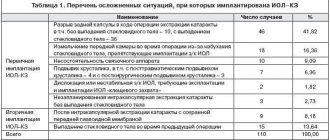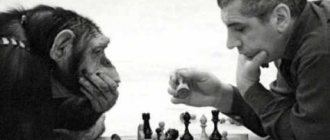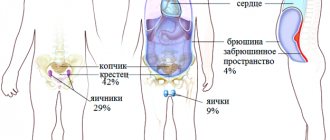Organizational methods in psychology
Organizational methods include comparative method, longitudinal method, cross-sectional method. Their use makes it possible to establish connections and dependencies between phenomena of different types (for example, between physiological, psychological and social development of the individual), features and patterns of mental development of people at various stages.
Longitudinal (from the English longitude - longitude) is a study in which the same group of objects (in psychology - people) is studied over a period of time during which these objects manage to significantly change any of their significant characteristics.
Longitudinal research is an experiment without a control group with one experimental group in which multiple observations are made over a sufficiently long period of time.
Longitudinal studies are used if:
- it is required to trace the history of the development of some kind of objects;
- it is required to consider how the occurrence of an event affects the behavior of the experimental group (for this, observations made before and after the occurrence of the event under study are compared).
Initially, longitudinal research (known as the “longitudinal section method”) developed in child and developmental psychology as an alternative to the “cross-sectional” method. The longitudinal method took shape in psychology in the 20s. XX century and was used mainly to study the genesis of the psyche and the scientific substantiation of psychological prognosis in child and developmental psychology. In subsequent years, long longitudinal studies (conducted over 20-30 years) began to be used, in which changes in certain indicators (adaptation to working conditions, intellectual development, development of giftedness, etc.) were monitored in large groups of subjects. The independent value of the longitudinal method lies in the possibility of predicting the further course of mental development and establishing genetic connections between its phases. The organization of a longitudinal study involves the simultaneous use of other methods: observation, testing, psychography, etc.
The main advantages of the longitudinal method are:
- The ability to process data cross-sectionally across individual age periods.
- The ability to determine the individual structure and dynamics of development of each person.
- The ability to analyze the relationships and connections between individual components of a developing personality, to resolve the issue of critical periods in development.
The difficulties of using the longitudinal method are due to a number of problems:
- selection of subjects. Here the problem of ensuring the representativeness of the sample arises. Difficulties also arise in determining the sample size. In well-known foreign longitudinal studies, the sample was distributed in the range of 200 - 2000 subjects;
- determination of optimal intervals between measurements. Typically, surveys are carried out every other year, although longer periods are possible;
- choice of duration. The longitudinal period can last from five to fifty years. The California Longitudinal Study, conducted from 1928 to the present day, is considered classic.
The disadvantages of the longitudinal method are associated precisely with the significant duration of the study. Personal and professional changes can result from random or dramatic events. Over the years, the number of subjects has decreased, the composition of researchers has changed, the range of parameters studied has expanded, and the methods themselves have undergone changes.
A disadvantage of longitudinal studies is their internal validity for the following main reasons:
- The “mortality” of the subjects, i.e. people participating in the study at the initial stages become unavailable by the end of the study (they leave, die, refuse further participation, etc.). In this case, there is no basis for comparing observations made before and after the event of interest to us. Mortality is one of the main sources of invalidity for longitudinal studies.
- The effect of the event under study may be delayed. It may take years before the results of the event being studied are noticeable.
- There is a possibility that some event that remains outside the field of attention may extinguish the effect of the event under study.
In addition, the disadvantage of this method is the significant time required to organize and conduct the study. Overcoming the shortcomings of the longitudinal method is possible through the use of other methods, in particular psychobiographical ones.
The results obtained in the longitudinal process depend on the age, work experience, professional affiliation of the subject and the socio-economic conditions in which the study was conducted. The presence of so many factors makes it difficult to obtain reliable results. Nevertheless, it is believed that longitudinal studies provide high predictive validity, reliability of results based on the homogeneity of the sample being studied. Longitude allows for individual analysis of the obtained data and, on its basis, establishing indicators of changes in various mental processes and states over time. Detailed individual analysis makes it possible to overcome the shortcomings of the comparative age method, which operates on averaged data.
There are many longitudinal studies that separately track the development of intelligence, sensory, psychomotor or professional qualities. There is significantly less research on personality development in general. The largest of them is a study carried out by employees of the Institute of Human Development at the University of California at Berkeley (from now on we will call it the California Longitudinal Study). It included three samples. The first sample was taken in 1928 in Berkeley and consisted of 248 infants aged 21 months; they were examined regularly until the age of 18 and then once at 30 and 40 years. The second sample consisted of newborns who were regularly examined until age 18, and then at 21, 26, and 36 years. The third sample, which began in 1932 in Oakland, included 212 fifth-graders (average age 11 years) with no information on the first ten years of their lives, but a detailed study of the transition from adolescence to adolescence and from adolescence to adulthood up to age 45 . All three studies used a wide range of methods, including anthropometry, fluoroscopy (to determine skeletal maturity), a variety of psychological tests, assessments and observations.
The data were subjected to careful examination and mathematical processing, and the degree of stability or variability of individual personal properties and types of development themselves was calculated separately for adolescence, for youth (14-17 years old) and for the transition from adolescence to adulthood (from 17 to 37 years old). The results of the California Longitudinal Study, published in numerous books and articles, are extremely valuable and unique. Its archives are still being studied. However, it also clearly shows the shortcomings and difficulties of this research strategy.
First of all, there are great difficulties of a material and organizational nature. A 40-year study is very expensive; During this time, research personnel and management inevitably change. If research methods are not sufficiently standardized, this will make the results incomparable. At the same time, research techniques and reliability criteria change as psychology develops. The dropout of subjects is very high. Of the 460 children who comprised the two original samples of the California Longitudinal Study, only 171 could be followed up as adults.
In a similar study begun in 1949 by scientists at the University of London, the initial sample was 220 infants; by the time they turned 15, only 100 people remained, some left without leaving an address, some' parents did not want to continue the examination, and in some places the subjects themselves refused to continue it. After all, such a long-term study is more intimate than weekly confession; the person participating in it knowingly assumes that psychologists will know more about him than he knows about himself. Therefore, it is precisely in adolescence that refusals become more frequent.
From the point of view of ethical considerations, the most important requirement for longitudinal participants is their willingness to engage in long-term research; this presupposes a fairly high level of education, which already makes the sample sociologically unrepresentative (i.e., not representative of the real structure of the population). In addition, when extending longitudinal findings to other people, it is necessary to carefully consider which of the recorded changes are actually due to age-related processes and which are due to the specifics of the group being studied.
One of the favorite topics of longitudinal research is the study of the dynamics of the development of intelligence, giftedness and creativity.
Research on giftedness has a relatively recent history (since the 70s of the twentieth century), while the vast majority of studies on this problem were carried out using the crosssectional method on samples of one (23%) or several (67%) ages.
Longitudinal studies of giftedness were founded by L. Terman and his colleagues, who studied a sample of children with high IQ (intelligence quotient) for 40 years. In 1921, Terman and Cox selected 1,528 boys and girls aged 8 to 12 years old from students in 95 high schools in California with an IQ of 135 points, which amounted to 1% of the entire sample. The level of intelligence was determined using the Stanford-Binet test. The control sample was formed from students from the same schools. It turned out that intellectually gifted children are ahead of their peers in the level of development by an average of two school grades. The subjects selected by Theremin were distinguished by their early development (they began to walk, talk, read, write, etc. early). All intellectually developed children successfully completed school, 2/3 received a university education, and 200 people became doctors of science.
The use of the longitudinal method in giftedness research is varied. As a rule, repeated regular study (measurement) of the same subjects is used over a more or less long period of time. In addition, quite often at the beginning of the longitudinal study, predictors of giftedness at an early age, developed on the basis of a particular concept, are assessed, and then the characteristics of the achievements of the same subjects at an older age, as well as the conditions for the appearance of these achievements in certain types of activities.
One of the well-known criteria for selecting gifted subjects for longitudinal research is public recognition of their achievements (for example, an award at graduation or in a prestigious competition in the natural sciences). The subjects, selected according to this criterion at school age, were regularly examined (once every 1-4 years) using questionnaires and interviews for 8-15 years. The results demonstrated, first of all, significant gender differences in the professional self-determination of the subjects, namely: a significantly greater dependence of the choice of profession, method of obtaining education and professional activity on family life planning for women than for men. At the same time, women showed low self-esteem of intellectual abilities and they more often abandoned scientific activities under unfavorable conditions.
The achievement criterion is often supplemented or replaced by psychometric methods: tests of intellectual, creative and other abilities. Thus, American psychologists undertook a 50-year study of the early manifestations of mathematical abilities, the purpose of which was to determine the conditions for the emergence of outstanding creative achievements in the field of mathematics. The study includes approximately 5,000 students selected at age 13 for high scores on the math and/or verbal scales of a test of academic aptitude. Over 20 years, five age cohorts aged 13, 18 and 23 years were examined using a unified scheme, which makes it possible to study the influence of socio-historical conditions on the development of giftedness from the 1970s to the 1990s. This study, like those mentioned above, primarily revealed gender differences. Gifted boys outperformed girls on tests of mathematical judgment, spatial reasoning, and mechanics, while the level of verbal and nonverbal (based on the complicated Raven matrices) abilities did not differ. Boys were most often interested in questions of mathematical theory; girls' interests were more balanced; they recognized the importance of the social and aesthetic sciences. Longitudinal data showed that, with equal levels of success achieved by age 23 (bachelor's or doctoral degrees, various awards), men were significantly more likely than women to excel in mathematics, physics, and especially technical sciences. Women more often chose professions related to the study of organic nature and social sciences.
The main advantages of the longitudinal method are the ability to define giftedness as potential, to identify subjects with such potential and track their development, and to record a wide variety of potentially relevant factors (individual and environmental) at the point in time when they manifest themselves.
In addition, the longitudinal method provides the opportunity to include in the study control groups of subjects of the same age, but differing from the gifted in certain indicators.
The main disadvantage of longitudinal studies is the significant time required to organize and conduct them.
The essence of cross-sectional, or cross-sectional , studies of mental development is, as is known, that conclusions about developmental characteristics are drawn on the basis of studies of the same characteristics in compared groups of children of different ages, different levels of development, with different personality traits, clinical reactions and etc. The cross-sectional method also has its advantages and disadvantages. The main advantage of this method is the comparative speed of research - the possibility of obtaining results within a short time.
However, studies in purely cross-sections are static and do not make it possible to draw conclusions about the dynamics of the development process, its continuity, and many patterns of development obtained in this way are very approximate.
The comparative method consists of considering individual mechanisms of behavior and psychological acts in the process of development and in comparison with similar phenomena in other organisms. This method is most widespread in animal psychology and child psychology. This method is called “comparative genetic”. The most productive use of this method in the field of comparative psychology (animal psychology) belonged to V. A. Wagner. In his works, he was the first to justify and use the evolutionary method, the essence of which is to study the life and compare the psyche of the animal being studied with representatives of the previous and subsequent stages of the evolution of the animal world.
The comparative genetic method occupies a particularly important place in the psychological teachings of L.S. Vygotsky. It was Vygotsky, studying the history of higher mental functions, who applied the comparative genetic method to solving problems of developmental and general psychology (especially in the study of language and thinking).
Basic research methods
Definition 1
A method is a path of knowledge that is based on a certain body of previously acquired knowledge.
There are different approaches to the classification and description of psychological research methods. The generally accepted classification of various methods of psychological research in Russian psychology is the classification of B. Ananyev. We have already completed an essay
D.B.Bromley more details.
He divides all methods into four large groups:
- organizational;
- data processing methods;
- empirical;
- interpretive.
Finished works on a similar topic
- Course work Classification of methods of psychological research (according to B.G. Ananiev) 400 rub.
- Abstract Classification of methods of psychological research (according to B.G. Ananiev) 220 rub.
- Test work Classification of methods of psychological research (according to B.G. Ananyev) 220 rub.
Receive completed work or specialist advice on your educational project Find out the cost
Practical significance of the comparative legal method
The practical benefit of the comparative method in legal science is that it allows one to find optimal ways to solve social problems. It allows us to understand why the same action is legal in the legal culture of one state, but criminal in another.
Comparative approach methods include various methods of comparison:
- functional, allowing one to compare the functions performed by one or another state institution;
- normative, using terms and categories of specific legal systems to analyze legal norms and legislative decisions;
- problematic, which compares the resolution of certain legal disagreements within the framework of the legislative system and analyzes the possibility of applying these decisions within the framework of its legislation;
- textual, analyzing which text design most productively influences the implementation of legal norms on a national scale;
- binary, which compares not a set, but only two existing political or social systems.
Interpretive methods
Interpretive methods include:
- genetic,
- structural.
Genetic helps to interpret the processed research material through developmental characteristics, highlighting stages, phases, critical moments in the formation of mental neoplasms. It determines genetic vertical connections between different levels of development.
The structural method reveals horizontal structural connections between the studied characteristics of the human personality.
Do you need to select scientific articles for your academic work? Specify a topic and receive a response in 15 minutes get help










